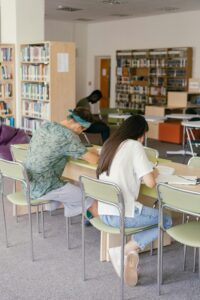|
Title: |
Fairtrade Exploration Exercise |
|
Country of implementation: |
Estonia |
|
Type of the practice: |
Practical exercise |
|
Type of education (primary, secondary, non-formal): |
Secondary schools |
|
Age of participants: |
15-17 |
|
Education form (online, offline, or blended): |
Online |
|
Link: |
https://padlet.com/mailane84/iglane-kaubandus-c8fjmve0lfu9x59e |
|
The main objectives of this exercise are: (1) to emphasize the importance of Fairtrade products; (2) to inspire and encourage concrete actions that contribute to healthy Fairtrade nutrition; and (3) to raise awareness about the issues of unfair trade, providing explanations and motivating students to choose Fairtrade. Working in pairs, students will embark on a journey through supermarkets to identify Fairtrade products. The tasks assigned include: 1. Capture the Moment: Take a photo of the selected Fairtrade product. 2. Trace the Origins: Identify the manufacturing country of the chosen product. 3. Certification Search: Look for and identify the Fairtrade certification sign on the product. 4. Share Insights: Post the findings on the Padlet wall. Within the Padlet platform, each pair is prompted to engage in a discussion by answering the question: “Why should one prefer Fairtrade products?” One of the key success indicators of this exercise is the students’ ability to think critically about how Fairtrade impacts the achievement of Sustainable Development Goals. Moreover, it aims to engage new audiences and cultivate interest in Fairtrade products, leading to a shift in students’ perspectives on healthy lifestyle choices. By integrating the exploration of Fairtrade products with a broader discussion on sustainable development and healthy living, this exercise aims to foster thoughtful reflection and proactive engagement among students. |
SWOT ANALYSIS OF CASE STUDY 2:
Strengths (internal factors):
- The exercise effectively raises awareness of Fairtrade aims, promoting consciousness about ethical consumer choices.
- Strong collaboration with local communities, including supermarkets and NGOs, enhances the exercise’s impact and reach.
- The use of a digital platform for assessment facilitates efficient data collection and analysis, enhancing the overall learning experience.
- Implementation of a learning-by-doing approach strengthens critical thinking, analytical skills, and creativity among participants.
- The exercise applies an interdisciplinary approach, fostering a holistic understanding of Fairtrade’s impact.
- The exercise contributes to promoting both healthy lifestyles and the principles of fair trade.
Weaknesses (internal factors):
- Assessment methods may need refinement for more comprehensive evaluation.
- Challenges in the implementation process may pose internal hurdles.
- The exercise may incur financial costs, potentially limiting its scalability.
Opportunities (external factors):
- The exercise has the potential to attract students from other schools and engage parents, expanding its reach and impact.
- The exercise’s replicability in other regions or countries offers the opportunity to disseminate its positive effects on a broader scale.
Threats (external factors):
- Various external barriers, such as regulatory or logistical challenges, may affect the effective implementation of the case study.
- A potential threat is the low level of participation and interest in the case study, affecting its overall success.
- The availability of Fairtrade goods in supermarkets may pose a threat, influencing the exercise’s feasibility and outcomes.
Some insights from conducted interviews: From students’ perspective:
“I enjoyed the research method and practical activities of “Fairtrade” exercise”.
“Now when I spot the green and blue Fairtrade Mark at local grocery store or my favorite online store, I can shop with confidence, knowing that I am making a positive impact on the world and using my purchasing power to support farmers and workers who deserve sustainable livelihoods.”.
From teachers’ perspective:
“Given that all the students prepared for the practical part and brought packaging from home to study and analyze, it was evident that this topic was interesting and useful to them. The students were able to explain to their parents the importance of Fairtrade labelling, thereby enhancing the positive impact of this exercise”.







